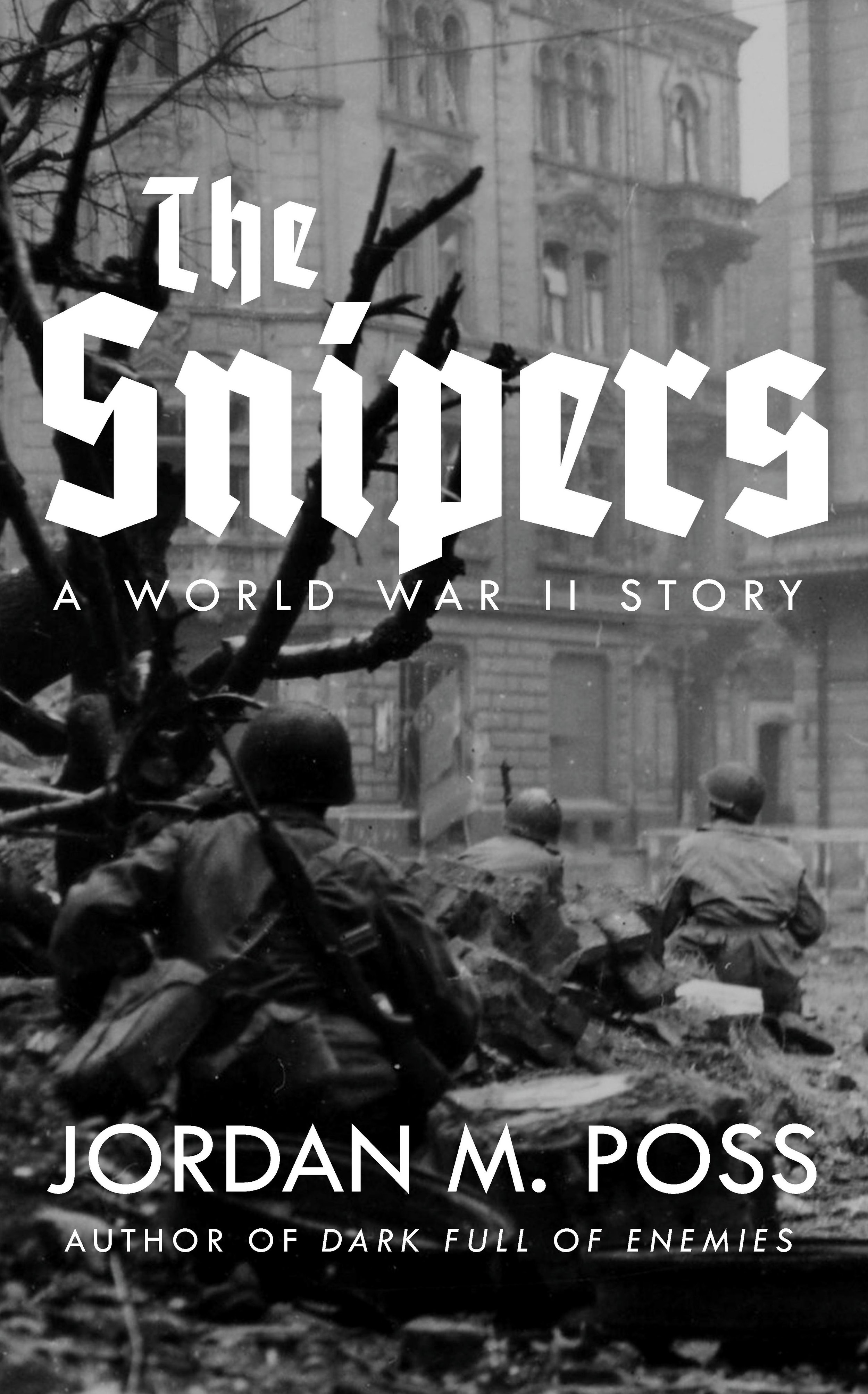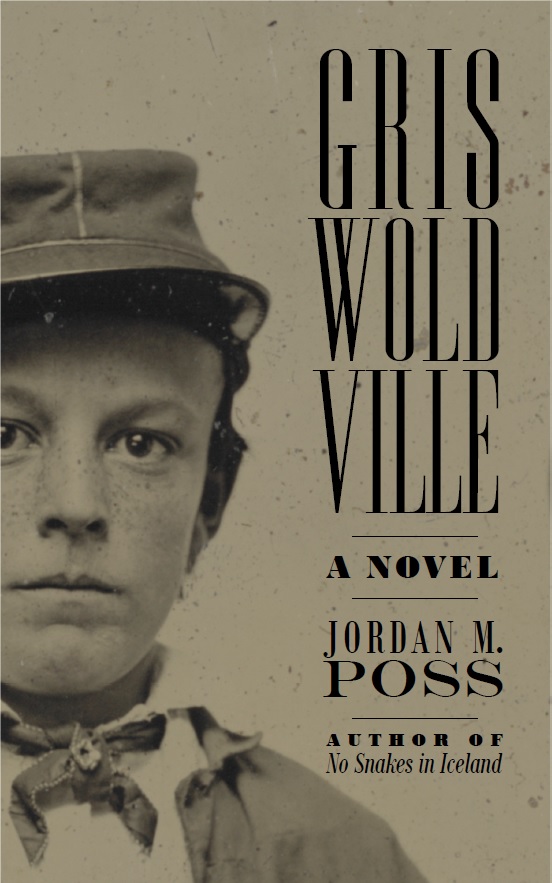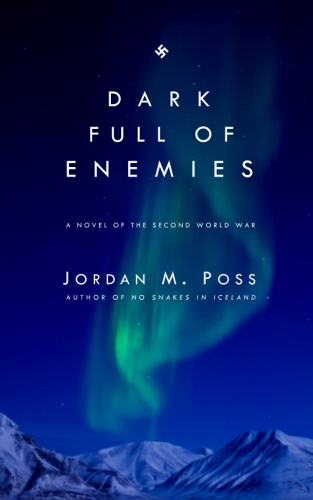Not to be
/Mel Gibson struggles with the infinitive of be in Hamlet (1990)
Last summer I read a novel by a well-known author of good genre fiction, whose books I have read and enjoyed before. This one proved terrible—abominable. Though its story, with a bizarre cold-blooded murder in a small Southern town and a subplot involving one of the most brutal and important campaigns of World War II, should have appealed to me and kept me reading, it was a slog. I had to make myself finish it.
One sure sign of a bad book is that you begin performing an autopsy on it before you’ve finished. You’ll never ask How is this working? or, more pointedly, Why isn’t this working? while reading a good book. In this case, I settled on a number of obvious problems—poor structure, an almost total lack of tension, terrible dialogue, clichéd narration, and even elementary mistakes like misused homonyms—but a more subtle problem made the book an almost unbearable bore: it just wasn’t well written.
Writing can go wrong in a lot of ways—just listen to Michael J. Nelson’s 372 Pages podcast for some exotic varieties—but good writing is not just about adhering to the rules of grammar. Perhaps the worst way writing can go wrong is to be entirely grammatically correct but, nevertheless, not good. This problem takes us over the frontier of the mechanics of language and into style, which is the domain of art.
Case studies
Even as I read the book last summer I pulled samples with a view to looking at what’s wrong with them. Here are three from different parts of the novel.
The first comes from a lengthy flashback relating one of the main character’s dramatic experiences in the Philippines during World War II. In this passage, he and his unit face off against the invading Japanese early in 1942:
Late in March, 150 big guns were positioned near the American line and began a ferocious bombardment. The assault was continuous, around the clock, and the results were devastating. Many Americans and Filipinos were blown to bits in their foxholes. Bunkers thought to be bombproof disintegrated like straw shacks. Casualties were horrendous and the field hospitals were packed with the injured and dying. On April 3, after a week of nonstop artillery fire, Japanese tanks and infantry poured through the gaps. As the Americans and Filipinos fell back, their officers tried to rally them into defensive positions, only to be overrun within hours. Counterattacks were planned, attempted, and destroyed by the vastly superior Japanese forces.
Here’s another passage from just a few pages later, a passage that ostensibly gives us a closer, more personal look into what the character experiences in the aftermath of defeat:
They were approached by Japanese soldiers waving rifles and barking in their language. Every rifle was equipped with a long bayonet. The prisoners were directed to a field, lined up in rows, and told to remain silent. One by one, the prisoners were told to step forward and empty their pockets. They were frisked, though it was obvious the guards wanted little contact. Punching and slapping were okay, but nothing that required finesse around the pockets. Almost everything was stolen, or “confiscated,” by the Japanese. Fountain pens, pencils, sunglasses, flashlights, cameras, mess kits, blankets, coins, razors, and blades.
And here’s a short one from after the war, relating the events following the protagonist’s inexplicable murder of a prominent local minister:
The police were called and Dr. Hilsabeck was notified. Everyone was alarmed, but not panicked. Liza was not deemed a threat to anyone else, and she was stable enough to take care of herself, for a few hours anyway.
All three passages struck me, even while reading, as weak, only barely conveying the drama that these events—an assault by the Japanese army, capture by the enemy, and the aftermath of a shocking murder—should have. While, as I mentioned, there are a lot of other problems with this novel—you’ll note that all of these passages violate the classic show, don’t tell rule—I want to look closely at the stylistic choices (or, more likely, non-choices) that made these passages lie so flat on the page.
Did you notice anything common to all three samples? One verb, a word so indispensable to us that it is almost invisible: to be.
The classic scapegoat
Let me start by saying that I do not mean passive voice, the classic bad writing scapegoat. Here’s William Strunk in the original 1918 edition of The Elements of Style. In Rule 10, the third of his “elementary rules of composition,” Strunk advocates using the active voice as opposed to the passive voice:
The habitual use of the active voice makes for forcible writing. . . . Many a tame sentence of description or exposition can be made lively and emphatic by substituting a verb in the active voice for some such perfunctory expression as there is or could be heard.
The example of passive voice we all learn in school is:
Active: The pitcher threw the ball.
Passive: The ball was thrown by the pitcher.
Passive voice is often singled out as a serious no-no in writing, and for good reasons. Passive constructions often lead to awkward, inside-out expression that weakens and distorts the flow of ideas in writing. Avoiding passive voice is preferable for all of the reasons Strunk cites above—forcefulness, emphasis, directness, liveliness, and what a professor of mine in college called “felicity of expression”—but it is entirely possible to write good passive sentences. Some meanings can only be expressed using the passive voice. Like that one!
What I’m concerned with in the examples above is the verb to be generally, whether “helping” as an auxiliary verb in a passive construction or standing on its own.
To be a villain
While to be helps us identify passive constructions, overreliance on to be even in active sentences can prove fatal to your writing. Good writing—really good writing—starts in the verbs. A vivid verb can tell you not only what someone is doing but even how they are doing it, and the perfect verb will carry some kind of sensory information as well.
But if the verb around which all of your sentences are constructed is to be, the weight of action and sensory experience, the qualities that make fiction vivid, have to be picked up and carried by other parts of the sentence. The burden usually falls on adverbs, the clumsiest means of specifying detail, or adjectives, which can rapidly purple your prose or smother the reader under a steadily accumulating pile of modifiers. In the worst case, the adverbs and especially the adjectives will not be well-chosen either, and convey… nothing.
And that kind of vagueness is fatal.
The samples were revisited by us
To see how overreliance on weak verbs like to be can hamstring your writing, look at the samples from that novel again. Here is the first sample above, with the verbs (mostly omitting verbals like gerunds and infinitives) in boldface:
Late in March, 150 big guns were positioned near the American line and began a ferocious bombardment. The assault was continuous, around the clock, and the results were devastating. Many Americans and Filipinos were blown to bits in their foxholes. Bunkers thought to be bombproof disintegrated like straw shacks. Casualties were horrendous and the field hospitals were packed with the injured and dying. On April 3, after a week of nonstop artillery fire, Japanese tanks and infantry poured through the gaps. As the Americans and Filipinos fell back, their officers tried to rally them into defensive positions, only to be overrun within hours. Counterattacks were planned, attempted, and destroyed by the vastly superior Japanese forces.
That’s nine uses of to be in this paragraph, three of which are passive. In order to convey the terror and drama of this event, the author relies on other devices like parallelism, as in the final sentence, in which to be has to “help” three other passive verbs in an attempt to achieve a sense of dramatic escalation. Notice especially the continuous stream of adjectives and how vague they are—ferocious, devastating, horrendous, vastly superior. As compared to what? The reader needs a concrete demonstration of why the bombardment was ferocious, why the results were devastating, and exactly how many and what kind of casualties count toward the battle being horrendous.
Here’s sample two again:
They were approached by Japanese soldiers waving rifles and barking in their language. Every rifle was equipped with a long bayonet. The prisoners were directed to a field, lined up in rows, and told to remain silent. One by one, the prisoners were told to step forward and empty their pockets. They were frisked, though it was obvious the guards wanted little contact. Punching and slapping were okay, but nothing that required finesse around the pockets. Almost everything was stolen, or “confiscated,” by the Japanese. Fountain pens, pencils, sunglasses, flashlights, cameras, mess kits, blankets, coins, razors, and blades.
Almost every verb in this passage is a passive construction, and those that aren’t mostly cluster in subordinate clauses. The author even reduces the most vivid verbs in the paragraph to adjectives or nouns by using them as participles and gerunds: waving rifles, barking words, punching, slapping. And there is the vagueness again: “Punching and slapping were okay” for whom? In what way? The Japanese were permitted to do it? Or the prisoners found it tolerable? And why was it “obvious the guards wanted little contact” with the prisoners? Even one curled lip or nauseous gag would help make this paragraph feel real.
(This is not the point of this post, but obvious is a word one should always, always, always avoid. Make it obvious, and then you don’t have to say that it is.)
And the final sample:
The police were called and Dr. Hilsabeck was notified. Everyone was alarmed, but not panicked. Liza was not deemed a threat to anyone else, and she was stable enough to take care of herself, for a few hours anyway.
This last, short sample includes several passive constructions—made the more noxious by coming along in a conga line, with two in the first sentence alone—but it is the vagueness that I want to highlight. Liza, the wife of the murderer in the story, “was not deemed—” by whom? Liza here would be the object of an ordinary sentence; in this passive sentence the subject has dropped out entirely. Most of the other be verbs lead us to foggy predicate adjectives. Stable, of course, is a piece of vague medical jargon that only raises more questions and leads us to another infinitive, the awkward to take care of. But vaguest of all is “alarmed, but not panicked.” The author invites us to understand that the wife and family of the man who just murdered someone are in some intermediate state of upset, and helpfully provides us a range. They were all somewhere between these two points, he tells us, but provides no details, no concrete sensory images, no facial expressions, no voices raised in shock or stunned silent.
Again: vagueness is fatal.
For comparison’s sake
To see how writers can do all of these things more skillfully, look at these passages from other novels. I’ve excerpted these from similar genre fiction, and each passage does what one of the above samples is trying to do, but better.
From Ralph Peters’s Civil War story Cain at Gettysburg, a short flashback passage about a moment during the Confederate bombardment ahead of Pickett’s Charge:
Instead of the Virginian and his men, Longstreet appeared, a black-miened man on a black horse. At the height of the artillery duel, Alexander had watched him ride calmly through the fields behind the gun line, showing himself to the men waiting in the trees, exposing himself with no regard for his safety, an inspiring figure, daring the Yankees to kill him, almost as if he would have welcomed death.
From Donn Pearce’s World War II novel Nobody Comes Back in which the protagonist, Toby Parker, a teenaged enlistee who has arrived in Europe just in time for the Battle of the Bulge, has been captured by German paratroopers:
One rammed a gun in his back. Another dug around in Parker’s pockets, took his watch and his wallet, shook one hand, and whistled in fun at the two grenades and the clips of ammo in the bandolier. The trooper stretched out the ripped, bloody ribbons of his pants with one finger and whistled again. He unwrapped the piece of K-ration dessert bar Parker had saved, nibbled at it, smiled, took a bigger bite, and poked the rest of it into Parker’s mouth.
In this excerpt from The Exorcist, by William Peter Blatty, a doctor examines a young girl who exhibits mysterious symptoms:
He repeated the procedure several times but without any variance in the result. He seemed dissatisfied. When Regan abruptly sat up and spat in his face, he instructed a nurse to remain in the room and returned to his office to talk to Chris.
Notice how vivid each of these is. In each of the three excerpts we, the readers, can see what happens. While the three authors use a widely varying amount of concrete detail and descriptive imagery, including adverbs and adjectives and the odd archaism or poetic effect, everything that works well in these passages does so because they are set up to do so by strong verbs.
What verbs should do
A well chosen verb does at least three things, things that set the counterexamples above apart from the vague, dull, plodding samples I quoted at the beginning of this post:
They convey action—Peters’s description of General Longstreet is apt here. Unlike the bombardment described in the novel that provoked this post, in which things just are ferocious or devastating or horrendous, in Peters’s book Longstreet appears and rides, setting up a series of verbals that work brilliantly as Longstreet shows and exposes himself and dares the enemy as Alexander, the reader's viewpoint character, watches. The characters do things, and they affect each other—and the reader.
They convey specifics—Pearce’s book does this especially well. The German who searches Parker after his capture remains continuously active through the whole paragraph and we not only learn what he does to Parker but can see how he does it, ramming with his rifle and digging and shaking and nibbling at Parker’s chocolate and whistling in amusement. We get a sense not only of the energy and menace of the scene but also of the German’s personality. I’d say to compare the originally sampled passage in which the Japanese search their prisoners, but there is no comparison. There is a difference between dashing and trotting, between chuckling and belly laughing, between shouting and roaring, and the writer who is attentive to the fine shading in the many, many verbs we have at our disposal will set himself far apart from the writer who settles for he was fast and he was good-humored and he was angry.
Finally, they allow subjects to act upon objects—Of the three counterexamples I offer, Blatty’s is almost journalistically straightforward. He uses one adjective and one adverb in these two sentences, which are otherwise a march of nouns and verbs. But there are no passive clauses, and not even one instance of to be, and notice how much he manages to convey: not only the businesslike professionalism of the doctor and the mechanical routine of the medical exam, but even that there is something… off… about the results.
The remedy for vague and weak writing is vividness and specificity of detail, and in good writing these will begin in the verbs.
A reminder and conclusion
I want to reiterate that to be is an integral and useful part of English and, like the passive voice constructions that rely on it as an auxiliary, it arose organically in our language as a way to express an important concept—being. I do not advise never using it. I’d even say it’s impossible in any long piece of prose.
But is it a mistake to lean too heavily on to be, and dangerously easy to do so. Writing as bad as the stuff I sampled from that novel results from habit. The writer who penned that book filled it with information—with all the characters, settings, events, and dialogue necessary to craft a gripping and emotionally powerful story—but made it an absolute chore to read because of the vague and lazy manner in which he wrote it.
I don’t mean to be cruel or disparaging—which is why I have not identified the book or author—but I use the word lazy purposefully. One can fall into an unthinking rhythm of it was and there were and he was and she wasn’t and end up wondering why one’s writing has turned out so lifeless. I suggested at the beginning of this post that the terrible style in that novel was the result of non-choices, and this book showed just such a lack of intentionality and care at the level of word choice—and not just in the author’s choice of words generally, but the words that matter most to the liveliness and vigor of fiction sentence by sentence. The results speak for themselves.
Some practical suggestions
I speak from experience. One of the most helpful notes I got on the rough draft of my novel Dark Full of Enemies came from my friend Dave Newell, who noticed a tic I had developed in the early chapters of that manuscript. Many of my descriptions began with There was or There were, with precisely the effect I’ve described. So as I revised the book I went through the manuscript with an orange highlighter and marked every instance of that construction, as well as every instance of to be in yellow for good measure. I struck as many of them as I could. Sometimes it required rewriting and restructuring entire paragraphs, or even more work. But it improved the narration, and, what is more, forced me to think about the words. I had to be purposeful—that is, I had to be an artist.
So let me end with a few practical suggestions and even what you might call exercises, challenges I have occasionally set myself when working on a piece of fiction:
Write a long paragraph describing a character without using to be.
Write a page-length description of an outdoor setting without using to be.
Write a long scene of action, whether as vigorous as a fight or sedate as a walk to the store, without using to be.
Write an entire chapter of any kind using to be less than five times.
During revision, use the highlighter method I described above. You may end up making decisions entirely different from mine—and more power to you!—but if you see highlighter marks clustering in different parts of your manuscript, you can be sure those sections need improvement.
If you’ve stuck with me this long, I hope you’ve found this post helpful. Thanks for reading!





